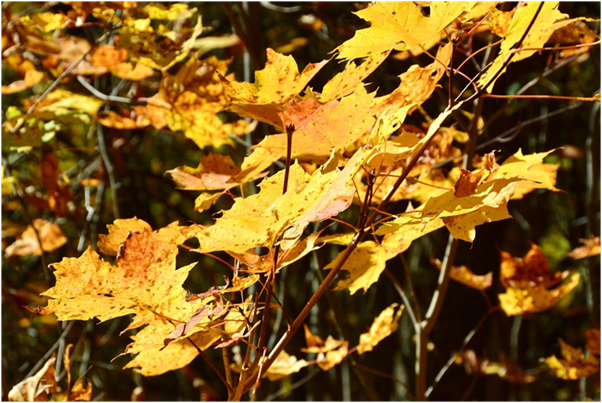Table of Contents
Are your Acer leaves scorching? And you are worried about how to deal with it. Then you are at the right place. Most Acer parents complain about their acer leaves turning brown, especially during summertime. Some also notice their acer (Japanese maple) leaves are getting blemishes, or their colours are fading in the summertime. These are often indicating leaves scorch, a non-infectious plant disease or disorder.
It primarily occurs in young and recently planted plants that do not have strong and extensive roots. Generally, leaves get this disease after long, dry, windy weather and high sun heat. In such weather, the water and moisture of the newly placed plant quickly evaporate in the air. As a result, leaves start to crumble, which we call scorch.
And, here we will discuss the significant reason why your Acer leaves are turning brown and other essential details you must know. So, without any further add-ons, let’s begin.
What is Actually Acer Leaves Scorch?
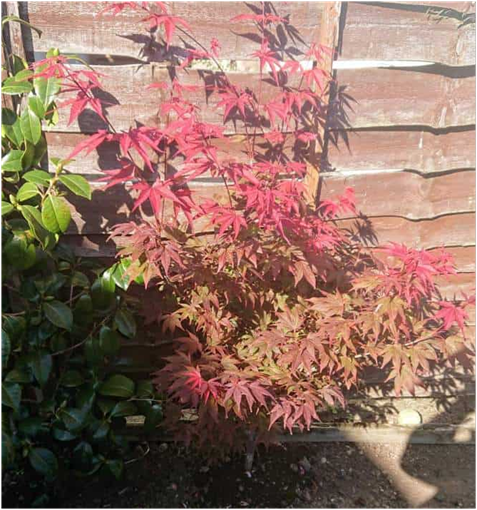
Do you know what Acer leaves scorch is or why are your Acer leaves turning brown? Acer leaves scorch usually do not cause any long-term effects on your plant. However, it can leave an infected plant visually unpleasing. And for people, they are often reminders of the late summer. Acer scorch happens every time the leaves release water quicker than the root can deliver. Also, several environmental factors, such as drought, waterlogging, frost, harsh and salty wind, extreme sunlight, etc., can cause scorch. One of the most common signs that indicate scorch is when your Acer leaves turn brown or grey and dry out prematurely.
Top 10 Reasons Why Your Acer Leaves Are Turning Brown
Acer leaves turning brown is a sign of leaf scorch. Leaf scorch is very common in Japanese maple. However, it can also affect Acer platanoides ‘Drummondii’ and Acer pseudoplatanus’ Brilliantissimum.’ Leaf scorch is a non-infectious disease and does not kill the plant. Yet it leads to premature drying of leaves, making your Acer look dull and dry. And many reasons lead to acer leaf scorch.
Here we will list the top 10 reasons why your acer leaves are turning brown-
1. MidDay Sun/Too Much Sunlight
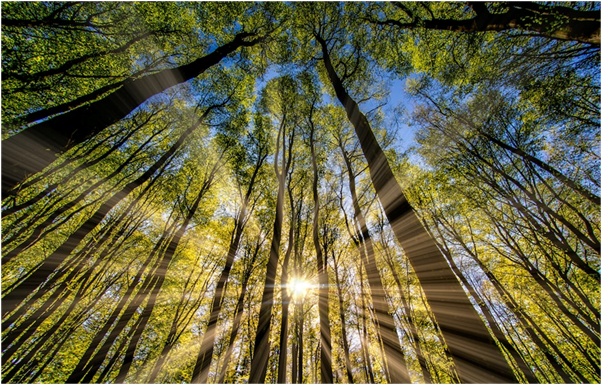
One of the primary reasons your Acer leaves turn brown is harsh sunlight or midday sun. Acer or Japanese maple are sunlight-sensitive plants; many do not respond well to midday or full sun. Unlike other plants, Acer leaves become dehydrated when exposed to harsh sunlight for a long time. You can give them adequate sunlight in the morning and late afternoon to keep them healthy. But you must avoid exposing them to direct harsh midday sun lights.
2. Harsh Winds
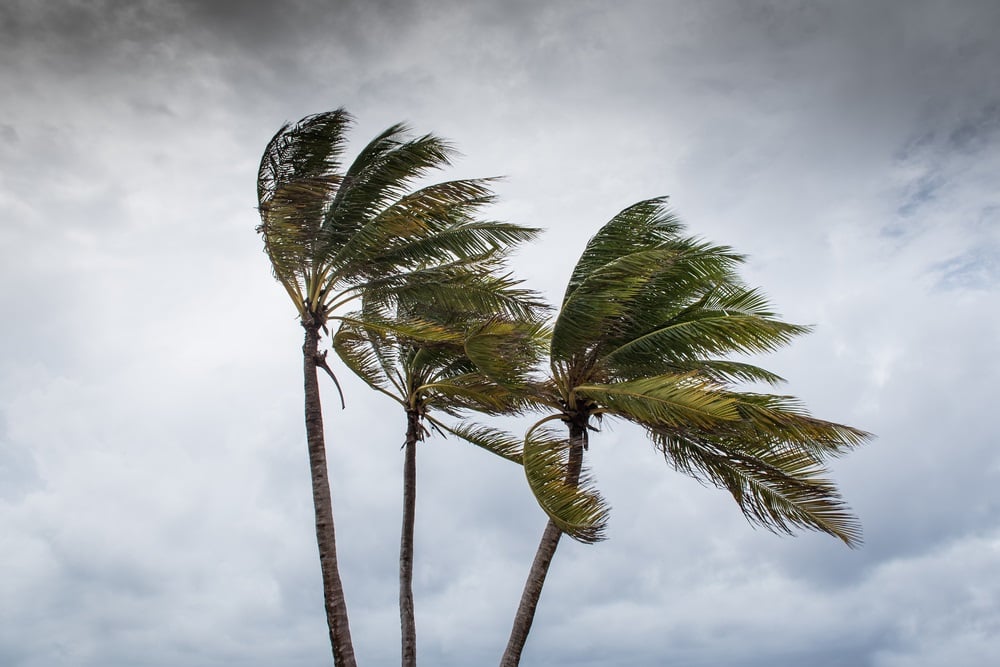
Another primary reason that your Acer leaves are turning brown or scorching is harsh winds. Harsh and windy weather is unsuitable for your Acer and often leads to leaf scorch. Acers are also sensitive to high and dry winds and quickly lose leaf moisture. If you expose your Japanese maple for too long in the dry and harsh wind, your Acer leaves will turn brown and grey and start to scorch.
3. Excessive Moisture
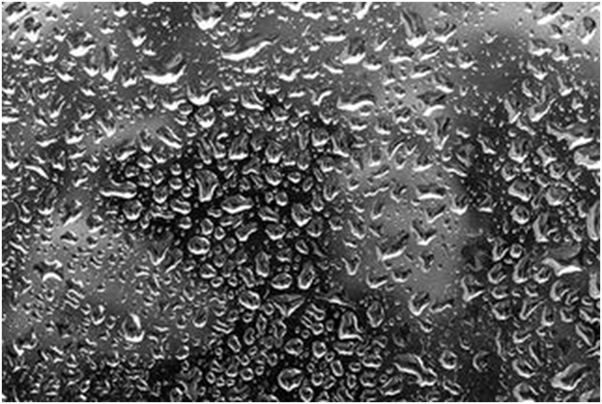
Acers are fragile shrubs that are prone to damage due to extreme conditions, including too much moisture. Watering plants is an excellent way to care for them. However, acers can develop root rot (verticillium wilt) and pathogens due to extremely moist soil. When verticillium wilt affects the plant, you may see your Acer leaves turning brown and yellow, become dry, and fall out. Once the root rot, you cannot do much to save the plant. So, it is advisable to invest time in prevention than finding a cure.
4. Dry Soil
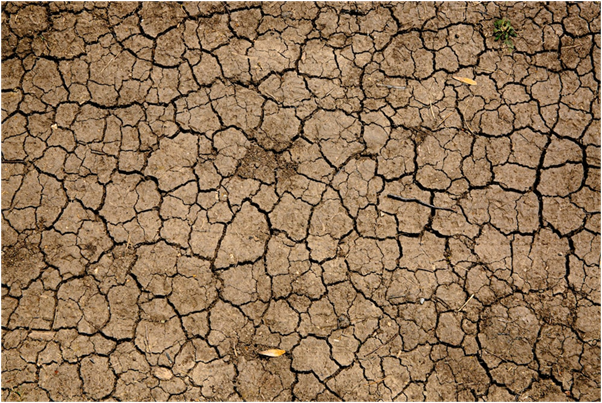
Dry soil can also cause Acer leaves to scorch and fall prematurely. Acer can die due to excessively moist soil. However, extremely dry soil can also be deadly for your Acer. Acer or Japanese maple needs a balanced condition to grow and live. It means the soil should not be too wet or too dry. Wet soil can root the rot, while dry soil can dehydrate the foliage and other parts of the tree and cause it to die. It is easy to identify whether the soil is dry or not. If the Acer leaves turn brown, start to curl up, and wither prematurely, it can indicate the soil is dry and need moisture.
5. Excessive fertiliser
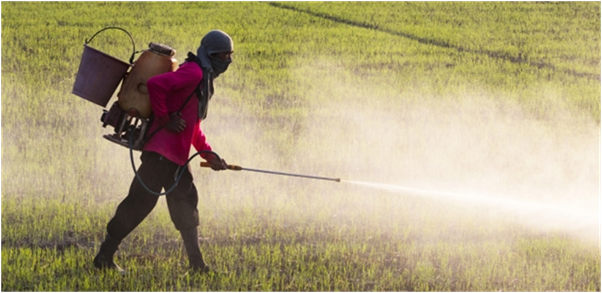
If your Acer leaves suddenly turn brown without harsh sunlight or wind, it may be due to excessive fertiliser. Minimum fertiliser can be a great way to improve your acer foliage and boost its growth. However, excessive fertiliser use can affect your plant negatively and cause harm. Acers are not heavy feeders, so if you plant them in fertile soil and use fertiliser, then even it will work. Excessive fertiliser results in leaf scorch in Japanese, and you may see your Acer leaves turning brown and drying due to overdose.
6. Alkaline Soil
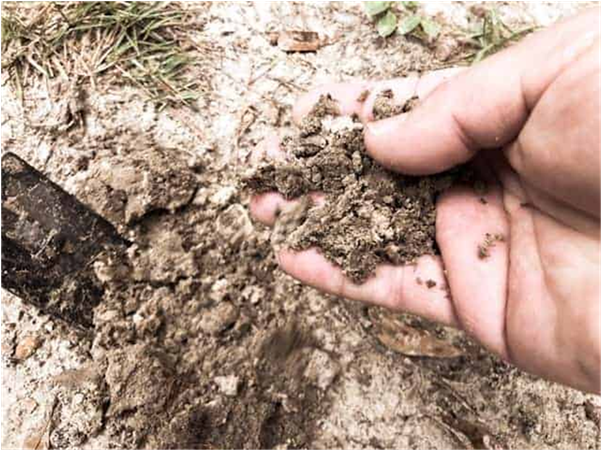
Alkaline also results in Acer leaves turning brown. Japanese maple needs slight alkaline as a part of the nutrient. But if the soil contains too much alkaline, it may cause a deficiency of iron, magnesium, zinc, etc. These nutrients are essential for Acer leaves to photosynthesis. Thus, alkaline soil can cause chlorosis. As a result, you can see your Acer leaves are turning brown and drying out untimely.
7. Bacterial Scorch
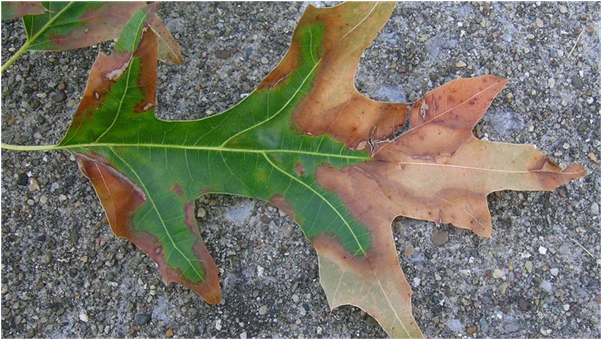
Bacterial scorch is also a type of leaf scorch due to bacterial Infections. Bacterial scorch also results in Acer leaves turning brown more of environmental scorch. But it comes back, again and again, every year. And you may witness more brown leaves with every passing year. A few environmental factors may cause bacterial scorch to your Acer leaves. The factors include under-watering, frost, drying winds, waterlogging, salt-laden winds, hot sun, etc. In a few cases, you will find a part of the leaves turn brown, while there may be some cases where the full leaves turn brown.
8. Improper Transplantation
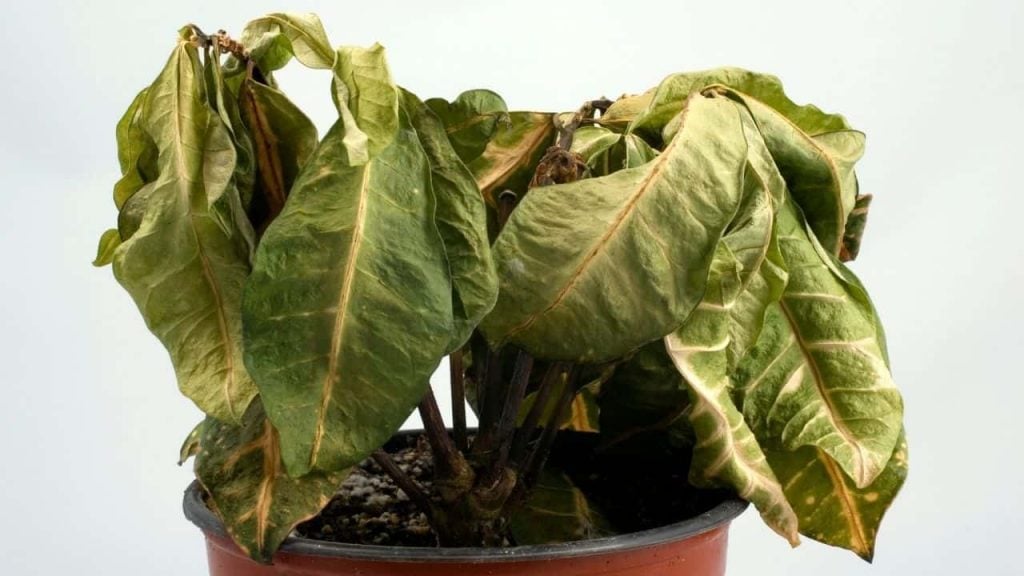
If your newly planted Acer leaves turn brown, it may be due to transplantation stress. When you transfer your Acer, you must do it very carefully and safely. If you do the transplant roughly or in unsuitable weather, your Acer will not survive. Acre leaves turning brown is a common sign indicating the transplantation was incorrect.
9. Frosts
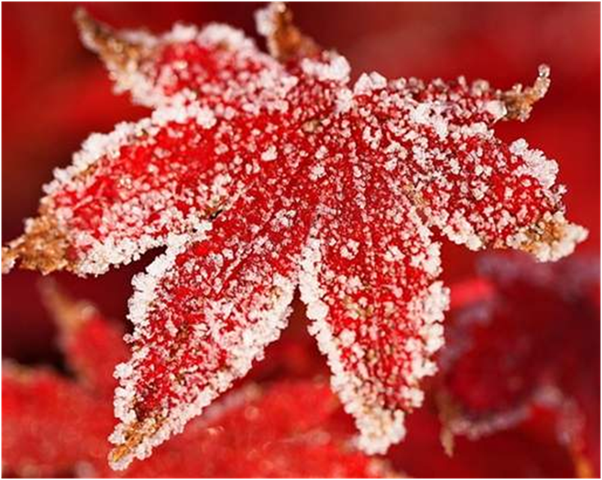
Are Acer leaves turning brown due to excessive cold? Well, maybe. Freezing temperature or frost can also be the reason behind Acer leaves suddenly turning brown. Japanese maple does not like midday and full sun exposure but also suffers from freezing cold temperatures. Frost often leads to prudence and turns Japanese maple leaves black and brown.
10. Water On The Leaves
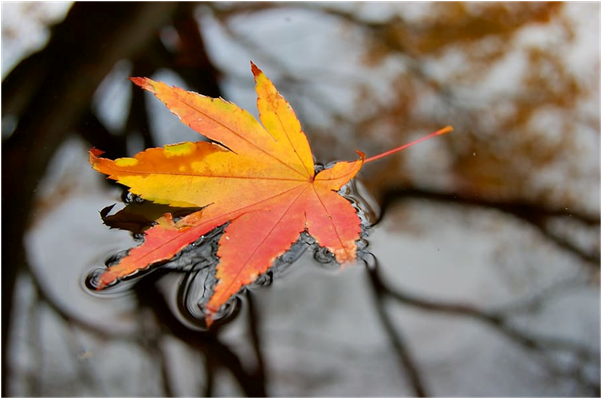
Lastly, water on the leaves can also cause Japanese maple or Acer leaves to scorch. Japanese maple is a sensitive plant. And if water on Acer leaves remains during bright sunlight, it will scald leaves. It is so because excessive water eventually leads to too much moisture. As a result, the roots will get rot due to excessive drainage of water to the soil. Hence, it is crucial for you to look after the leaves every time and ensure it does not get too much water.
What are the Early Symptoms of Acer Leaves Scorch?
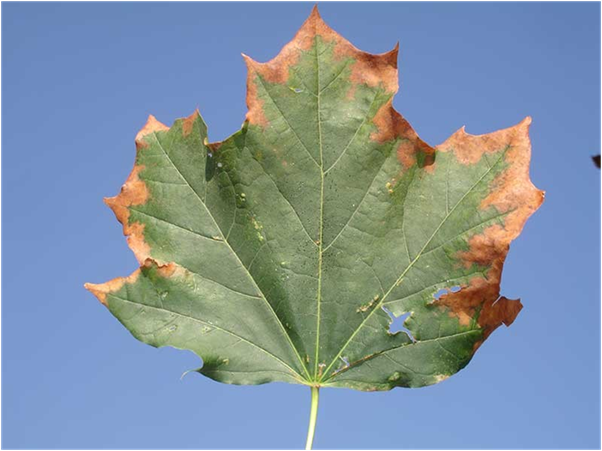
Several symptoms can indicate acer scorch, and Acer leaves turning brown is one of the most common symptoms of scorching leaves. Leaves turn brown, especially on the top and edges. Besides the leaves turning brown, many other symptoms can indicate leaf scorch. Here we will list some major ones-
- Leaves are turning grey.
- Curling.
- Shriveling.
- It starts to dry out from the edges and become completely crisp
- In some cases, twigs and young branches may also die.
How to Deal With the Acer Leaves Scorch?
It is natural to get worried when your Acer leaves turn brown and black. It can happen due to many reasons, from environmental to wrong treatment. But there is nothing to worry about, and you can prevent your Acer leaves from turning brown. Here we will discuss some tips to deal with Acer leaf scorch-
- Rough and dry winds are a big reason Acer leaves turn brown. So, you can use gust breakers if you live in an area with too harsh wind. A fence is a great way to prevent the harsh wind from damaging the foliage.
- Water on the leaves of Japanese maple can also cause leaf scorch. As a result, your Acer leaves will turn brown and dry. Avoid watering the plant during the daytime. Instead, water them in the evening or early morning.
- Most acres planted on a container lack nutrition. As a result, your Acer leaves a scorch. To prevent the leaves from turning brown, use soil-based compost likeJohn Innes No 2.
- Also, do not overwater your Acer or leave them dry for long. These both will hurt your acer and cause the leaves to dry out prematurely.
- Try to place your Acer in the shade, especially during summertime, and ensure it is not exposed to midday sun lights for long.
- Check the soil pH of your Acer. The maximum soil pH should be around 7 to keep your Japanese maple healthy. An arborist can help to check the soil’s alkaline levels.
- The Acer plant is sensitive and needs careful handling during transportation. If you transplant Japanese maple in bad weather or uproot it harshly, the leaves turn brown and dry prematurely. You must ensure the soil is wet and loose. Also, do not transplant your Acer during warm summer days or dry autumn.
- If your Acer is in a container, moving will be easy. So, during frost, move your car indoors to prevent frost.
Wrapping Up
In conclusion, we have mentioned almost ten reasons that can be the reason for Acer leaves turning brown. Many complain that their Acer leaves turn brown and dry out prematurely. But most of them are unaware of the reason behind the leaf scorch. Japanese maple or Acer are very sensitive plants that require proper care to live longer and healthier.
However, leaf scorch is fairly common in acer and can happen to environmental, fungal, bacterial, or manhandling (improper transplantation, too much fertiliser, or watering). Therefore, to prevent leaf scorch, you need to identify the cause and prevent them promptly.
So, will you let your precious Acer suffer or start caring for it today?
Frequently Asked Questions (FAQs)
Do I Need to Remove the Brown Leaves to Prevent Leaf Scorch?
You must remove the brown leaves if it is a bacterial scorch. It is the best and most effective method to prevent leaf scorch. Also, it will bring back the former appearance of the plant and make your garden look better. However, if your Acer leaves are turning brown due to environmental scorch, it will go away naturally.
What Is the Primary Cause Behind the Acer Leaf Scorch?
There can be many reasons behind the Acer leaf scorch. However, the most common reasons behind this condition are – Environmental factors, bacterial infections, too much watering, excessive fertiliser, and high soil alkalinity. If you want to prevent leaf scorch and take precautions beforehand, it is advisable to plant them carefully. Not only that, you must be consistent when watering and keeping the plant protected from excessive sunlight.
Does the Acer Leave Require Excessive Water?
Medium watering and mild temperature are ideal for the Japanese maple. However, the shrub is fragile, and excessive watering can lead to root rot or leaf scorch. In addition, if the water on the foliage stays during full sun lights, it will scald leaves and turn them black and brown. If you are concerned about how many times you need to water Acer plant to prevent scorching, consider watering them twice a day. Watering them properly during summer, autumn, and spring is necessary. It is so because lack of water may lead to dead stems.
How to Know Whether the Roots of Acer Are Rotted?
It is easy to identify whether the roots of Acer are rotten. Look for signs like excessively moist soil, leaves turning brown and yellow at a young age, and curling inwards. If you notice a leaf drop or wilting, it clearly indicates root rot. It happens when the roots become weak to transfer nutrients and water to the tree. Also, if a waterlogging problem arises, it will eventually cause root rot as well. However, the best way to prevent root rot is to take care of the plant properly.
Is It Possible for Acer to Recover from The Leaf Scorch?
Leaf scorch is quite common in Japanese maple. However, it is not a serious condition, and your acer will not die due to the leaf scorch. In severe cases, the leaf scorch may lead to withering leaves and twigs, leaving the plant unpleasant. It mainly happens whenever the leaves lose their moisture or get too much dry due to some environmental factors. But, it will revive if you take good care afterward and use natural composts. Natural compost like Mricle-Gro all-purpose compost can help you keep your plant healthy.

